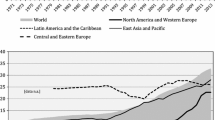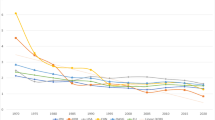Abstract
According to the present plan, the enrollment of the University of the Air of Japan will be approximately 30,000 students when it reaches its steady state. Its current expenditure is estimated to be Yen4.1 billion at 1979 prices; adding the annual cost of facilities and equipment and the service that the National Center for Development of Broadcast Education performs for the university, the total amounts to Yen 5.0–7.1 billion. Adding this to the students' study expenses, Yen 6.7–8.7 billion will be required to operate the university. About 50–60% of the cost will be borne by the national treasury. The current expenditure of the university is estimated to be Yen 171,000–237,000 per equivalent undergraduate.
As compared with the current expenditure in the humanities and social sciences programs of conventional universities, the academic structures of which are similar to that of the University of the Air of Japan, the current expenditure per equivalent undergraduate is estimated to be 1/4, 1/3, and 2/3 of that at national universities, public universities and day programs of private universities, respectively, and equal to that of evening programs of private universities.
From the viewpoint of cost per graduate, it is equal to that of evening programs of private universities, their day programs, public universities, and national universities, when the graduation rate is 60%, 50%, 25%, and 20%, respectively.
Similar content being viewed by others
References
Athabaska University (1982). Fact Book 1981–1982. Edmonton: Athabaska University.
Carnoy, M. and Levin, H. M. (1975). “Evaluation of educational media: some issues,” Instructional Science 4: 385–406.
Holmberg, B. (1982). Recent Research into Distance Education. Hagen: Fern Universitat.
Inoue, T. (1981). The Report on the Present State of Distance Teaching Universities in U.K., Spain and the U.S.A. Chiba: The National Center for Development of Broadcast Education.
Jamison, D. T. and Lumsden, K. G. (1975). “Television and efficiency in higher education,” Mangement Science 21: 920–930.
Jamison, D. T. and Orivel, F. (1982). “The cost-effectiveness of distance teaching for school equivalency,” in H. Perraton (ed.), Alternative Roots to Formal Education Baltimore: The Johns Hopkins University Press, pp. 253–269.
Kikuchi, J. (1977). “The analysis on the cost-effectiveness of the life-long education system,” in S. Ichikawa (ed.), The Analysis on the Cost Effectiveness of the Life-Long Education in Urbanization. Tokyo: Study Group in the Economics of Education, NIER, pp. 97–128.
Kwen, S. C. (1984). “The present state of the Korean Correspondence University,” MME Research Note of the National Center for Development of Broadcast Education no. 7: 31–53.
Laidlaw, K. G. and Layard, R. (1974). “Traditional versus Open University teaching methods: a cost comparison,” Higher Education 3: 439–468.
Levin, H. M. (1984). Cost-Effectiveness: A Primer. Beverly Hills: Sage.
Lumsden, K. G. and Ritchie, C. (1975). “The Open University: a survey and economic analysis,” Instructional Science 4: 237–291.
Mace, J. (1978). “Mythology in the making: is the Open University really cost-effective?” Higher Education 7: 295–309.
McIntosh, N. and Rigg, M. (1979). Employers and the Open University. Milton Keynes: The Open University Survey Research Department.
Ministry of Education, Science and Culture (1980). Basic Data of the University of the Air of Japan. Tokyo: Ministry of Education, Science and Culture.
Muta, H. (1978). “Sources of expenditure for higher education,” in S. Ichikawa (ed.), Allocation of Educational Resources in Japan. Tokyo: Study Group in the Economics of Education, NIER, pp. 51–101.
National Center for Development of Broadcast Education (1983). Handbook of the National Center for Development of Broadcast Education. Chiba: National Center for Development of Broadcast Education.
National Committee on Research and Development for Establishing the University of the Air of Japan (1975). The Report of the Master Plan of the University of the Air of Japan. Tokyo: Ministry of Education, Science and Culture.
Open University (1982). Open University Digest of Statistics 1971–1981 vol. 2. Milton Keynes: Open University.
Otsuka, H. (1984). “On the radio and television universities of the People's Republic of China”, MME Research Note of the National Center for Development of Broadcast Education no. 7: 65–118.
Rumble, G. (1981). “The cost analysis of distance teaching. Costa Rica's Universidad Estatal a Distancia,” Higher Education 10: 375–401.
Rumble, G. (1982a). The Open University of the United Kingdom. Milton Keynes: The Open University Distance Education Research Group.
Rumble, G. (1982b). “The Universidad Estatal a Distancia, Costa Rica,” in G. Rumble and K. Harry (eds.), The Distance Teaching Universities. London: Croom Helm, pp. 72–87.
Rumble, G. (1982c). “The Universidad Nacional Abierta, Venezuela,” in G. Rumble and K. Harry (eds.), The Distance Teaching Universities. London: Croom Helm, pp. 187–203.
Rumble, G. and Keegan, D. (1982). “General characteristics of the distance teaching universities,” in G. Rumble and K. Harry (eds.), The Distance Teaching Universities. London: Croom Helm, pp. 204–224.
Snowden, B. and Daniel, J. S. (1983). “The economics and management of small post-secondary distance education systems,” in D. Sewart, D. Keegan and B. Holmberg (eds.), Distance Education. London: Croom Helm, pp. 398–424.
Srisa-an, W. (1983). The Evaluation of Higher Distance Education Results: The Case of Sukhothai Thamathirat Open University of Thailand. Madrid: A Paper Presented at the International Congress of Open and Distance Teaching Universities.
Stoikov, V. (1975). The Economics of the Recurrent Education and Training. Geneva: International Labor Office.
Swift, B. (1980). Outcomes of Open University Studies - Some Statistics from a 1980 Survey of Graduates. Milton Keynes: The Open University Survey Research Department.
University of East Asia of Macau (1983). The Open College: First-Year Prospects for Academic Year 1983/84. Macau: The University of East Asia.
University of the Air Foundation (1983). The University of the Air of Japan. Chiba: The University of the Air Foundation.
Wagner, L. (1972). “The economics of the Open University,” Higher Education 2: 159–183.
Wagner, L. (1977). “The economics of the Open University revisited,” Higher Education 6: 359–381.
Author information
Authors and Affiliations
Rights and permissions
About this article
Cite this article
Muta, H. The economics of the University of the Air of Japan. High Educ 14, 269–296 (1985). https://doi.org/10.1007/BF00136109
Issue Date:
DOI: https://doi.org/10.1007/BF00136109




